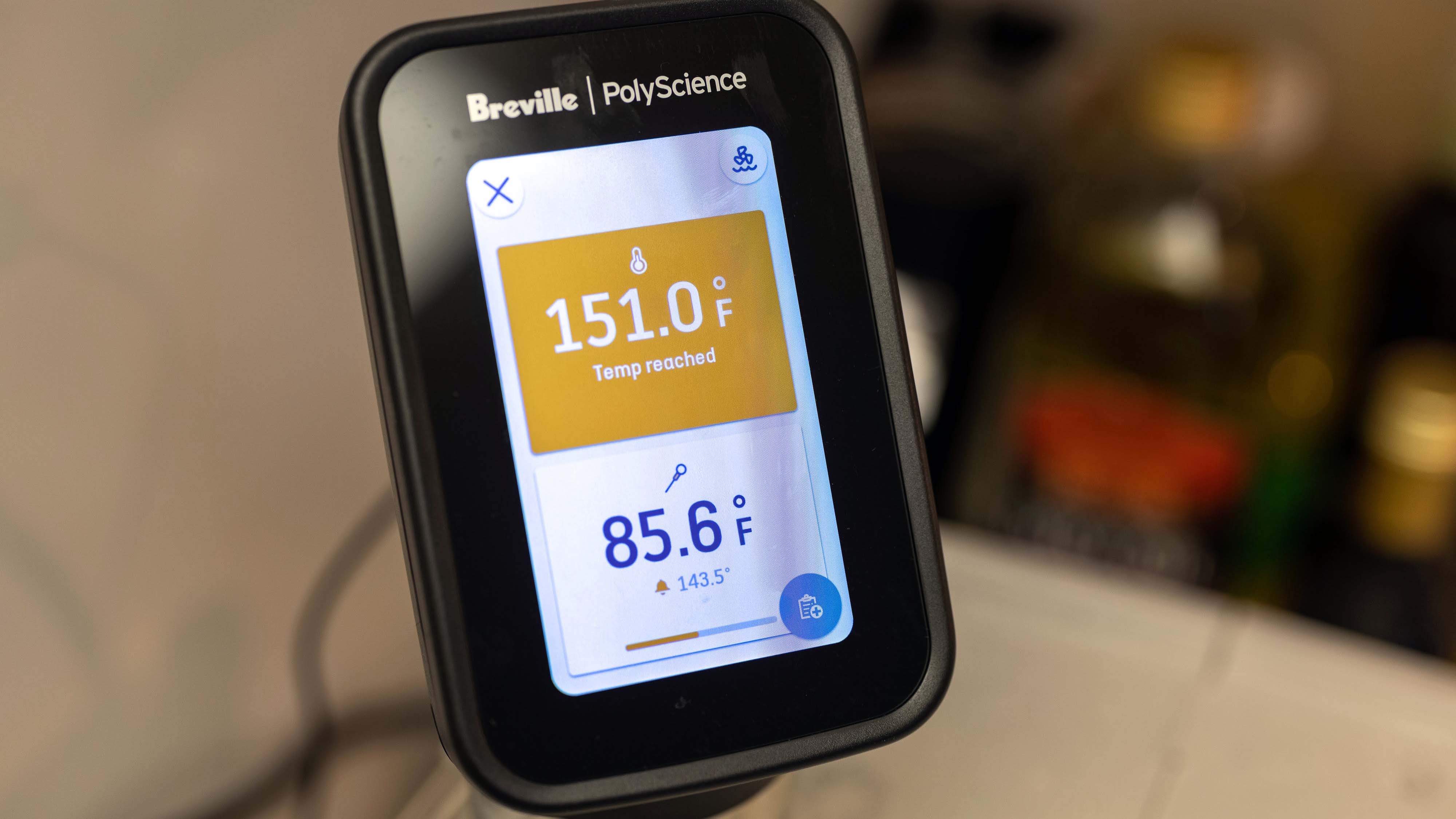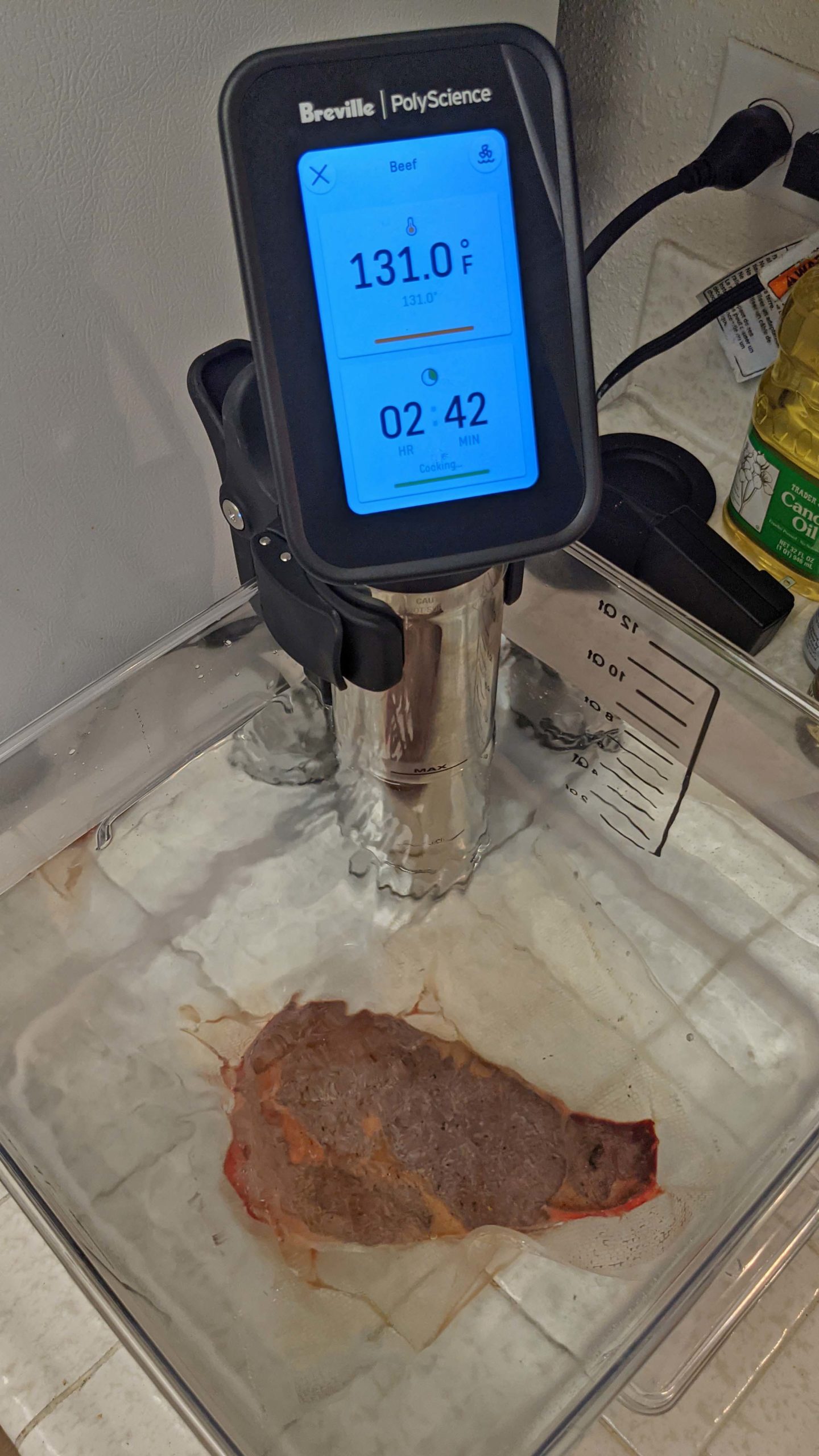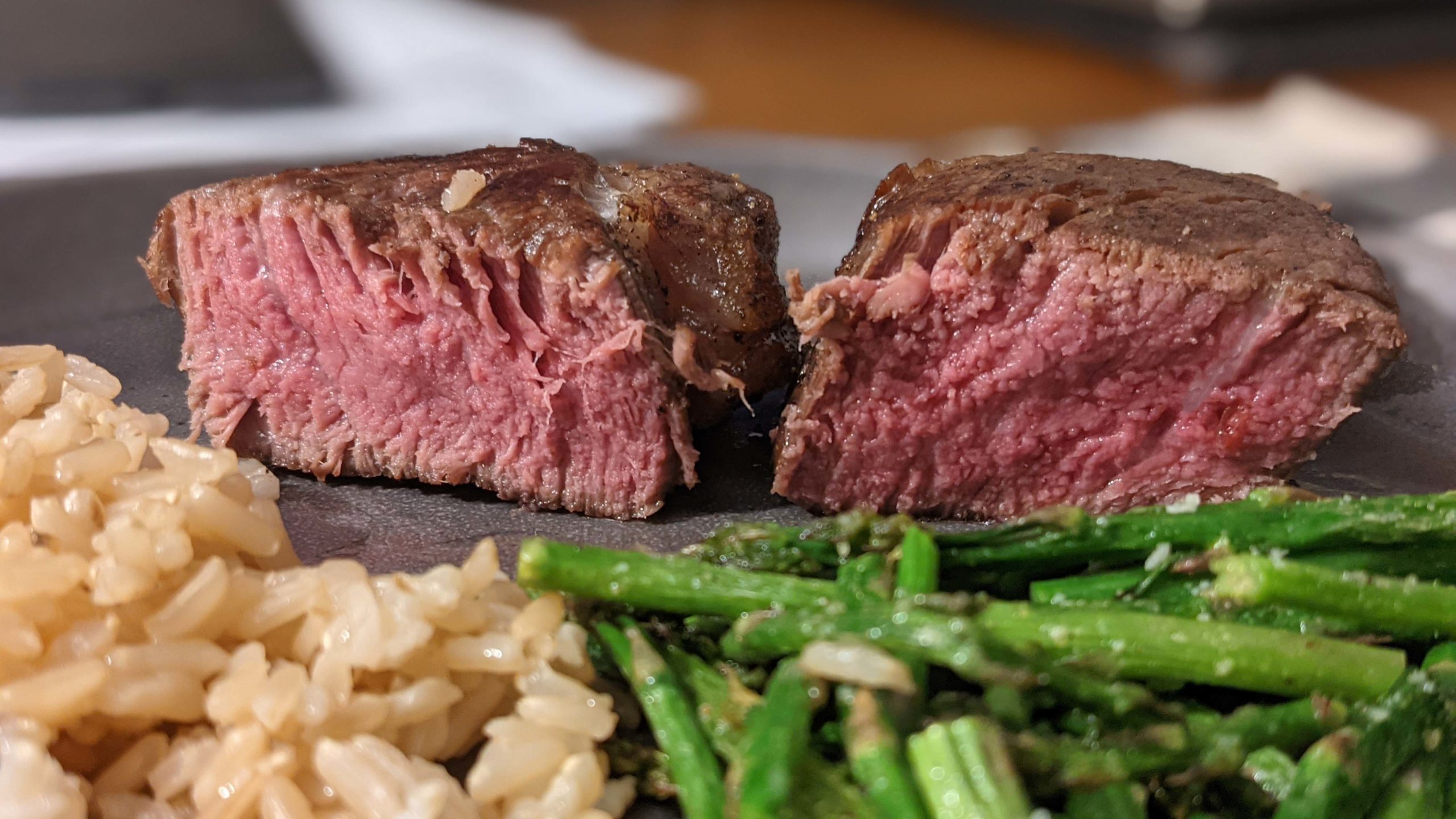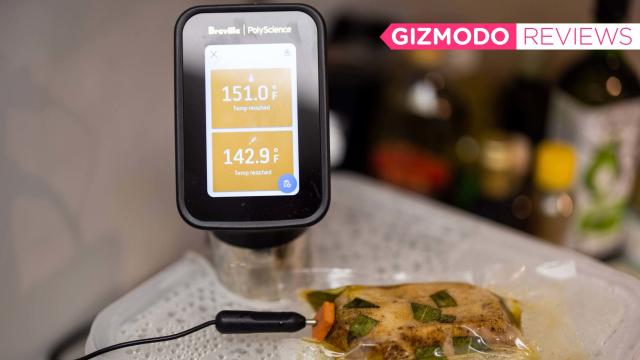I have often described sous vide as “the nerdiest way to cook a steak.” I also think it’s the best way. Or, at least, the best way to achieve consistently excellent results and have it be almost impossible to screw up. Honestly, I didn’t think it could be improved upon much, so when I heard that a new sous vide machine called the HydroPro Plus from PolyScience added yet another layer of nerdiness on top of sous vide — something called delta cooking — I didn’t see the point. And then I tasted the results and promptly lost my mind.
A quick sous vide primer for non-culinary geeks: Sous vide, loosely translated from le francais, means “under vacuum,” though you don’t really need a vacuum or anything to do it. Basically, sous vide devices are immersion heater/circulators. They heat a water bath to a very specific temperature and keep it there. You put your food (most often meats, but there are recipes for veggies, eggs, and desserts, too), into a heat-safe plastic (maybe silicone) bag, get as much air out of the bag as possible, and then sink it into the bath and leave it to cook slow and low for a very long time.
The idea is that if the perfect level of doneness for a steak is 55 degrees Celsius, then you set the water to 55 degrees C, and then the whole steak slowly gets to that temperature, so no part of it is overcooked, no part is undercooked, and it loses very little moisture because it’s all sealed up in there. You then give it a quick sear just for flavour, and you have the most perfectly-cooked steak imaginable. If you accidentally leave it in for three hours too long, it’s still going to be totally fine. Basically, it idiot-proofs some serious gourmet stuff.

Breville PolyScience HydroPro Plus
What is it?
A high-tech sous vide machine that enables delta cooking
Price
$849
Like
Fast, quiet, and efficient; excellent touchscreen menu and controls; delta cooking made the best salmon I’ve ever had in my life; very consistent results
Don't like
Expensive; no Wi-Fi or app-based controls; big and bulky
Oversized and Lacks an App
The HydroPro Plus is a sous vide machine. It looks like most other consumer sous vide machines these days, except it is both bigger and thicker than your typical home sous vide, making it a little intimidating. My go-to sous vide, the ChefSteps Joule, is very small by comparison and fits easily in a drawer. I do not have a drawer big enough for the HydroPro Plus.
The Joule must be controlled by a smartphone app, though, which can be a pain and sometimes does not work very well. In contrast, the HydroPro Plus has a large, bright touchscreen. On that touchscreen there’s an app called Sous Vide Toolbox. It asks you a series of questions like: what are you cooking, is it fresh or frozen, how thick is it, and what kind of doneness do you want. You just tap what you want, and presto, the water starts heating to the correct temperature, and the timers are all set and good to go. You can also manually set times and temps, and you can even save settings if it’s something you plan on cooking again, which is very handy.

I will say that for a device this expensive it’s a shame that it doesn’t have Wi-Fi connectivity or a full-featured smartphone app. That’s a common feature for home sous vides these days, and it frequently gives you the ability to see videos of the different texture options (useful) as well as the ability to monitor the cook even if you step out of the house (even more useful). There is a Bluetooth radio and an iOS/Android app, but it’s just used for logging temps and times for food safety tracking and reporting (more for professional kitchens).
Still, the HydroPro is extremely intuitive for a standalone system.
What on Earth Is Delta Cooking?
There are actually two versions of this thing: The HydroPro (around $650) and the HydroPro Plus ($849). Both can do all of the stuff I mentioned above. The HydroPro Plus, however, comes with a digital needle probe thermometer, which enables it to delta cook. Consider it next-level sous vide. With delta cooking, you insert the needle probe into the centre of the thing you’re cooking. It pierces the plastic sous vide bag, but you put a piece of foam tape (some of which is included with the HydroPro Plus) on the bag before piercing, and so water still can’t get in.

With delta cooking, unlike regular sous vide, you make the water a good deal hotter than you want the final internal temperature to be. It’s not quite “set it and forget it.” The HydroPro Plus has an alarm (a loud one), so when the needle probe senses the target internal temp it will sound, and then you pull it out. This accomplishes two things.
1. Delta cooking is faster. With sous vide, the last few degrees take the longest, because there’s the smallest differential between the water temp and the food. By using hotter water, your food will get to the proper core temperature 30-50% faster, which could shave hours off dinner time.
2. Delta cooking creates variation in the texture. Because using sous vide causes everything to end up at the same temperature, if you cook something like a fatty cut of salmon, it can have a homogenous texture to it that feels weird — like you’re biting into a stick of butter. With delta cooking, there’s more contrast. You can still get that perfectly soft medium-rare in the middle, but then it gets a bit flakier as it goes outward from the centre.
There are a lot of different delta cooking techniques you can use, which gives you more to nerd out about and experiment with (this is PolyScience’s delta cooking explainer). This also gives you more options for screwing it up. It’s definitely not for everybody, but delta cooking is an addition to a chef’s toolbox. As far as I know, the HydroPro Plus is the only consumer sous vide machine that has built-in temperature probe integration. You could still delta cook with a normal sous vide and an independent needle-probe thermometer, but you’d have to watch it closely.
The Results
So anyway, how does it all work? Extremely well. The water heats up nice and quickly, which isn’t surprising, since it circulates 17 litres per minute, and can heat up to a 45-litre bath (which would work for a small restaurant). I made several steaks using standard sous vide techniques and everything turned out as tender and as delicious as expected.

The “a-ha!” moment was when I delta-cooked some salmon fillets. I gave the skin a quick sear before putting it in its bag, added some fresh sage, salt, garlic powder, pepper, and olive oil, then I sealed it and inserted the needle probe. I turned the water bath to 82 degrees Celsius, but set the internal temp alarm to go off at 50 degrees C.
It took just 13 minutes to reach the right core temp. I quickly opened the bag, plated it, and oh, my, god. It was the best salmon I’ve ever had in my life. It was so perfectly tender and juicy, but it also had just the right amount of flakiness. It didn’t have that weird uniform texture you usually get from sous vide. It still felt like eating salmon, it was just the platonic ideal of what salmon could be.
Again, I wouldn’t recommend delta for everything. I also tried it on a porkchop (which, I was told, would benefit from a little textural contrast). This was a lower/longer cook. I set the water to 66 degrees C and the temp probe alarm to 62. The idea was that this would give me a faster cook, and it certainly did. It was ready 45 minutes later. I quickly seared both sides in a cast iron pan. The results were…good. They were fine, but it didn’t blow me away like the salmon.
The most ambitious cook I tried didn’t involve delta, but it did involve a lot of patience. I blow-torched some beef short ribs to give them a sear (and to pasteurise the surface), then threw them in a bag, added some marinade I made, and cooked them at 71 degrees C for a whopping 48 hours. The result was incredibly tender and juicy. If you picked up a bone the meat would fall right off of it. I’m glad I did it, but I’m not in a hurry to do it again. I mean, you can’t be. It takes too long.
Worth the Money?
Ultimately, I love cooking with this thing. It’s powerful and intuitive, and I love the option of being able to delta cook, as it gives me more things I can experiment with. And for professional chefs, being able to log internal food temperatures for HACCP compliance makes this kind of a no-brainer. That being said, for the average home chef who is just wanting to dip their toes into sous vide cooking, it’s absolutely overkill.
It’s great, but at $650 or $849 (for the HydroPro or the HydroPro Plus, respectively), it’s quite expensive, especially when there are excellent home sous vide machines in the $250 range that have apps that do a lot of hand-holding. If you’ve got the money and the desire to get uber-geeky with your food, though, this thing is fantastic.
